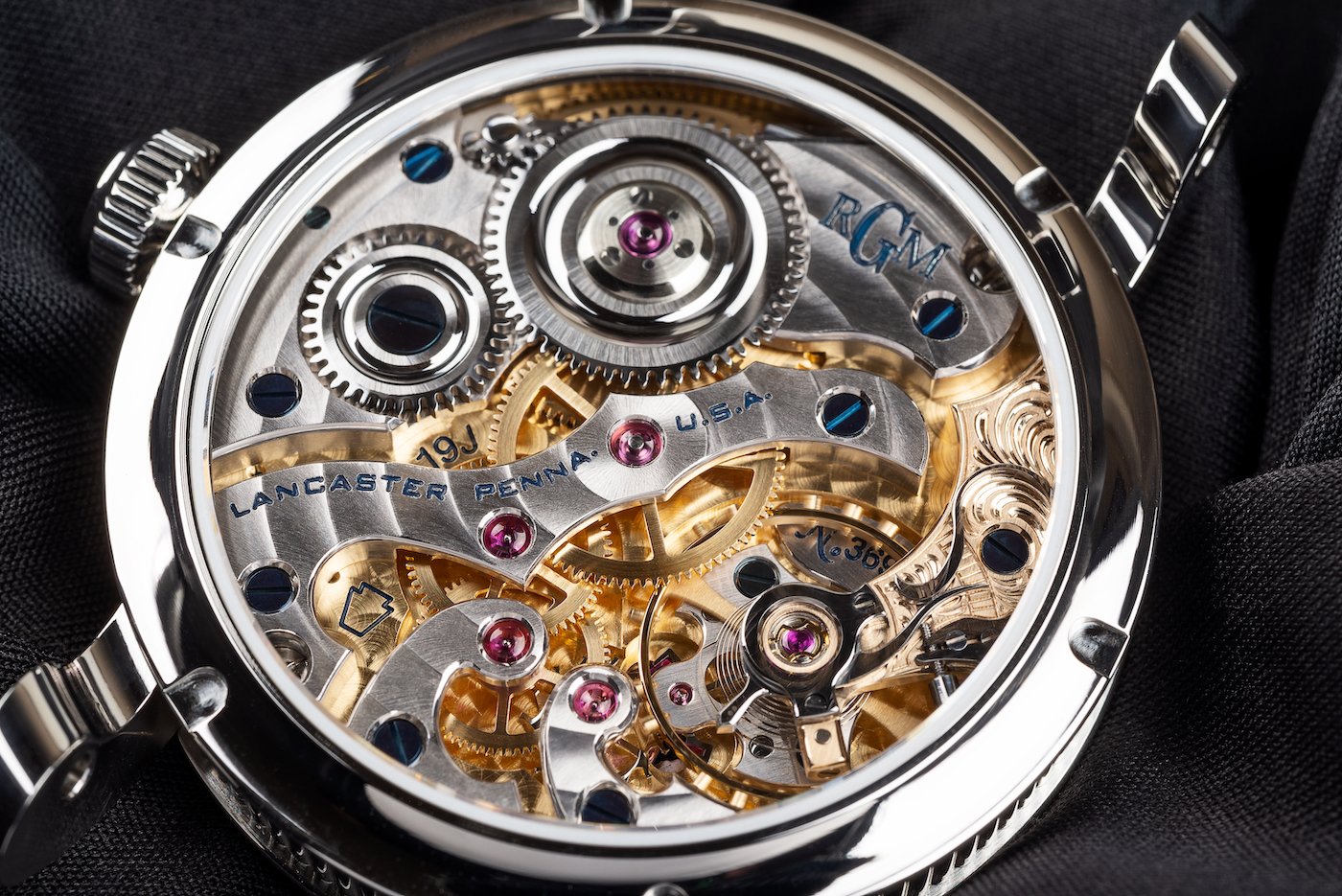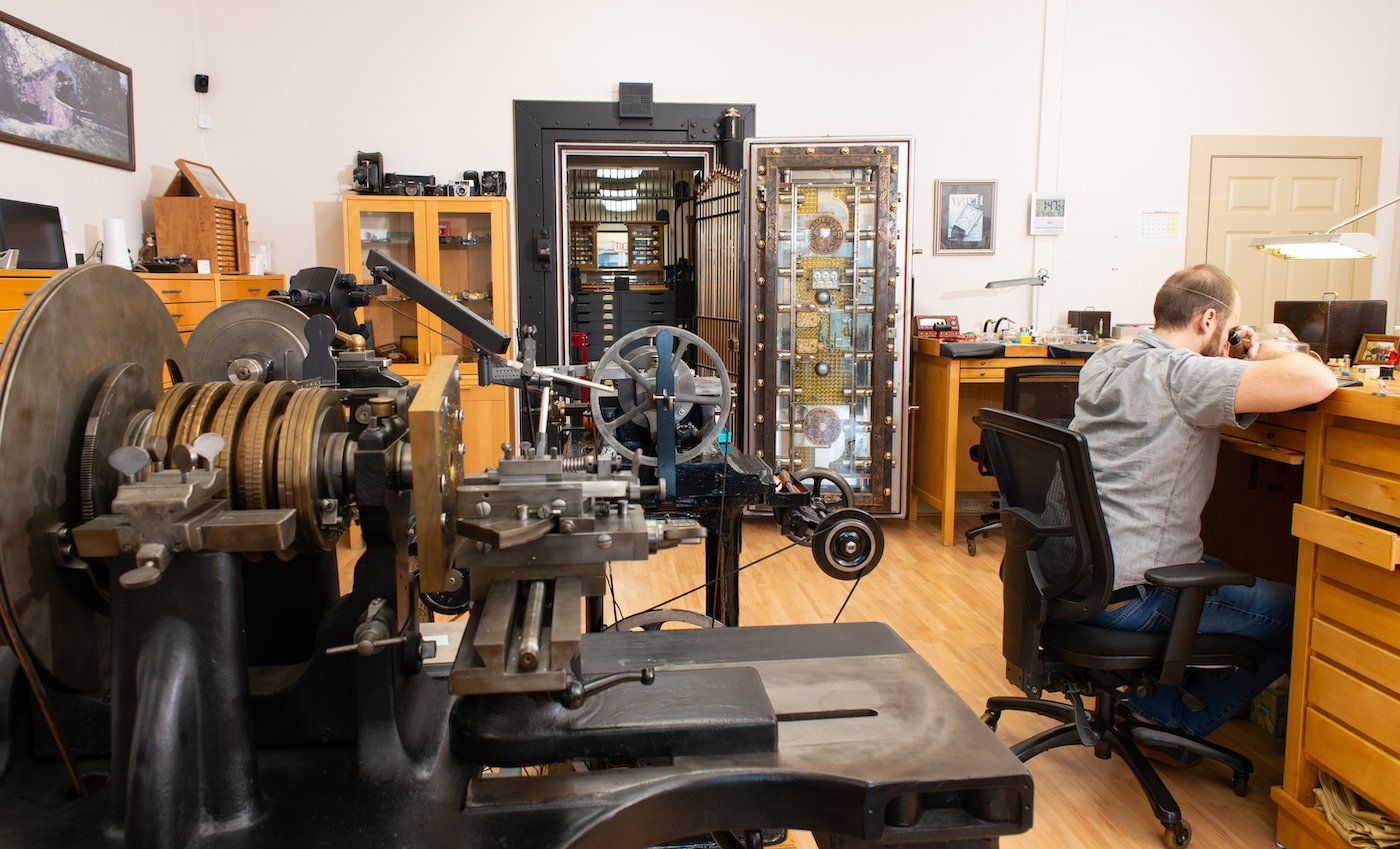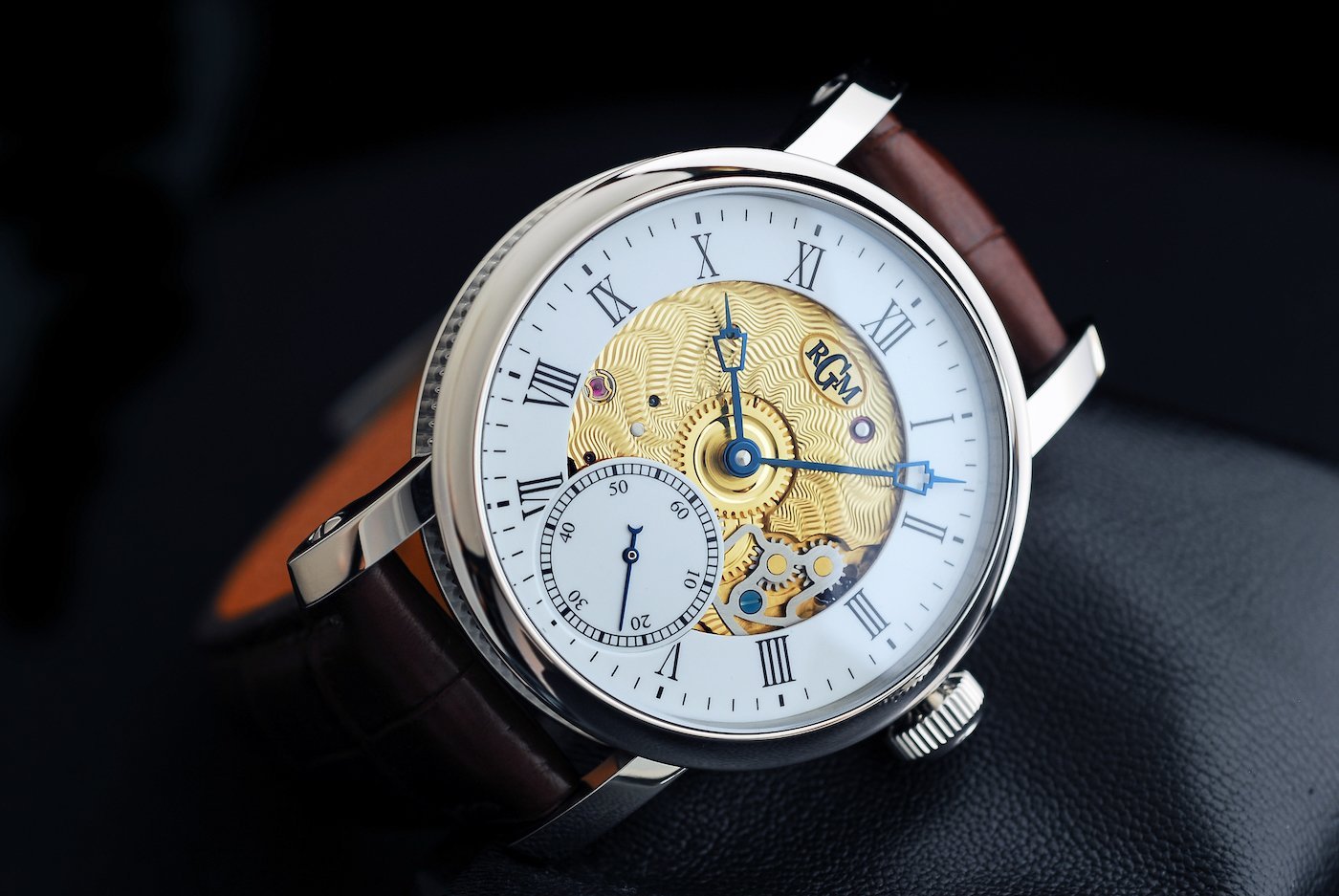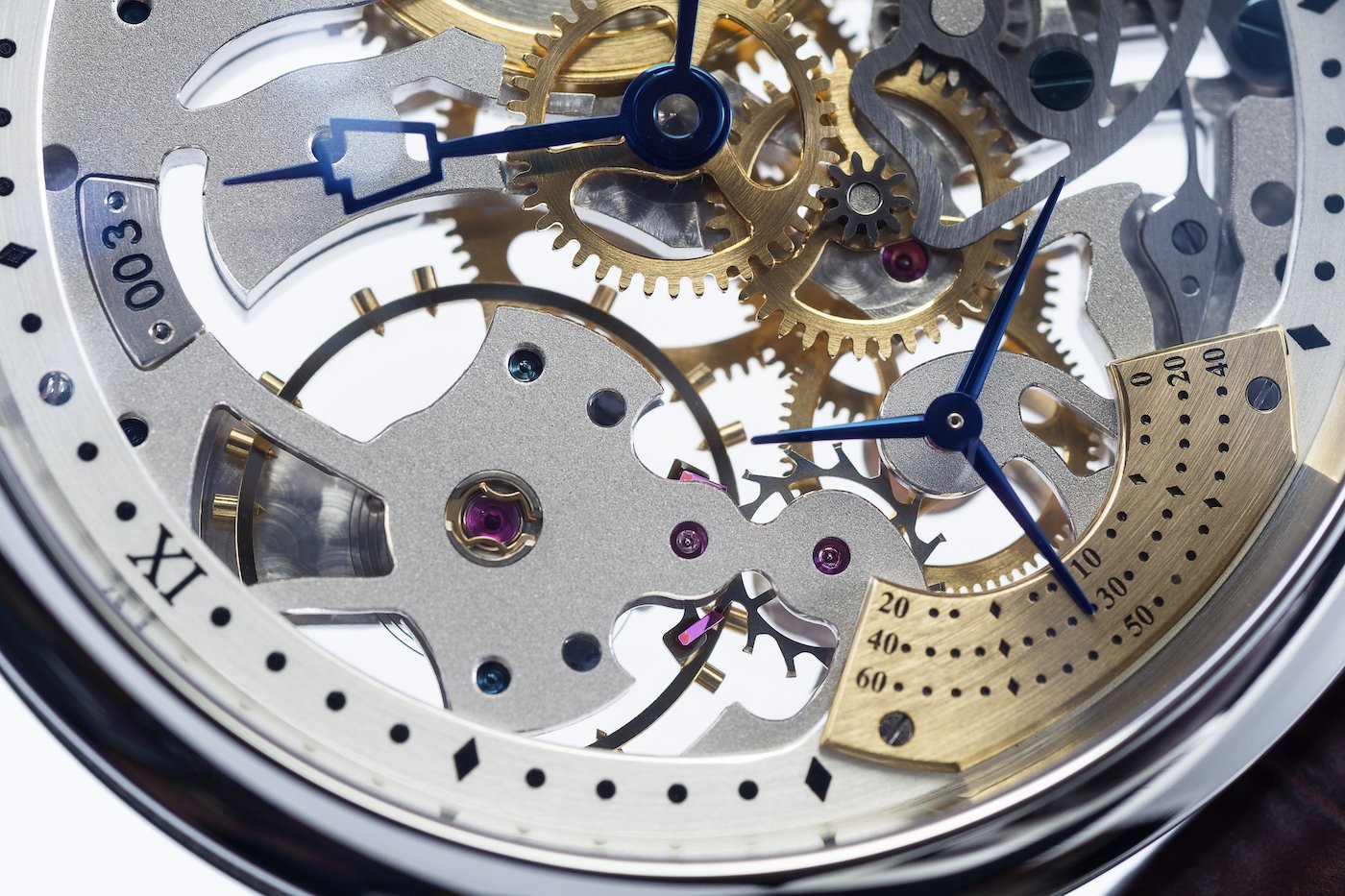he 19th century in American watchmaking reads like a chapter from the Gilded Age, a spectacular era recaptured by HBO’s namesake dramatic series. It was a time that birthed the American system of industrialised manufacturing and precision timekeeping innovations.
However, as the 20th century witnessed the industry wane and its power shift to foreign hands, Roland G. Murphy chose to set up shop among the remnants of a once-vibrant nexus. He anchored himself in rich horological roots, nodding to the gloried, traditional craftsmanship.
Going independent in 1992, Murphy started his eponymous watch company in Lancaster County, Pennsylvania. This region was once home to Hamilton, the country’s last major watch manufacturer, and where echoes of America’s horological golden days still linger.

A road less ordinary
Few independent brands can boast over three decades of excellence, with four in-house movements to their name to date. Even fewer hail from across the Atlantic. RGM has not only blazed the trail but also become a fixture in 21st-century American watchmaking.
Murphy’s reputation is widely recognised; pull up any list of notable American brands, and while other names may come and go, his is consistently cited. Beyond those shores, RGM has also made its mark internationally, garnering four GPHG nominations since 2015.
-

- Custom RGM Model 222: a modern wristwatch featuring a vintage Hamilton pocket watch movement and a hand-made wave guilloché dial
But unlike his Swiss peers, Murphy has had to navigate a barren landscape: “It’s always been harder for me because on this side of the ocean, I’m not surrounded by all of the allied industries that most of the other independents have. They have everything at their fingertips.”
Murphy understood the uphill battle of lacking local manufacturing supplies from his vocational training days in Lancaster and the esteemed halls of WOSTEP in Switzerland in the 1980s, to the years in technical roles with SMH (later the Swatch Group) developing watches for Hamilton.
As fate would have it
Despite maintaining, “my plan was never to get rich; it was just to make a living at what I love doing”, Murphy’s dedication has driven RGM from a personal pursuit to a respectable operation, boasting a full-fledged workshop with an 11-strong team producing under 300 watches a year.
The business has expanded from servicing and restoring, acquiring house specialities such as rose-engine guilloché, to gradually enhancing manufacturing capabilities to craft new and custom watches, incorporating Swiss movements, restored vintage calibres, and complications.
Murphy’s ambitions didn’t stop there. In 2000, he took the plunge to create RGM’s in-house movements. Turn the century back, and the mere concept of American haute horlogerie was virtually non-existent, let alone a future promising prospective patrons. It was a gamble few would have dared take.
-

- Roland G. Murphy, founder, proprietor, and master watchmaker of RGM Watch Company
Furthermore, Murphy’s progress was hindered by countless manufacturing obstacles that came from treading unchartered territory. Nevertheless, after seven long years of development, RGM finally introduced its first in-house Calibre 801, fit for dual use in pocket and wristwatches.
Extending American history
Thoughtfully designed and engineered for modern utility, this manual-wound time-only movement is a marriage of features inspired by antique pocket watches from bygone hero brands Keystone-Howard and Illinois. It transformed Murphy into America’s proud answer to the world’s elite watchmakers.

RGM has continued to mature, now boasting three additional in-house calibres (Tourbillon, Cal 20, and 801-SW), each crafted with 90-percent American-made parts. “We’re the only company making a tourbillon in North America. We hand-make the cage and build the movement in our workshop,” Murphy proudly states.
Their mechanisms also highlight antique wolf-tooth wheels, seven-tooth winding clicks, and a revamped motor barrel system inspired by classic American railroad pocket watches. Adorned with intricate decorations, these regulating organs serve as heartfelt tributes to the traditions of old-world watchmaking.
-

- Model 222-RR: a RGM classic with its distinctive crown position and a grand feu enamel dial modelled after American railroad watches from the past
“We’ve always tried to take cues from some of the watch brands of the past. We’ve brought forward the qualities I admire because, 100 and 150 years ago, there were a lot of American brands,” Murphy recalls.
The longevity play
Despite mastering his genre, Murphy acknowledges the ongoing challenges of sustaining longevity in the industry, including the disappearance of previous suppliers. “That’s one of the reasons to increase our in-house capabilities in the last decade, reducing reliance on external sources,” Murphy explains.
-

- Guilloché is RGM’s house specialty
However, he remains realistic about the allure of the “USA Made” label (which requires a product to be ‘all or virtually all’ made in America), stating, “If I wanted to go out of business, probably one of the quickest ways to do it is to set up an entire jewel manufacturing!”
-

- Bespoke commissions form a key aspect of RGM’s offerings, including custom dials and unique pieces upon request.
“You have to pick what makes sense: what make sense for us to manufacture, what we enjoy doing, what’s going to have the most impact, what’s the most important thing to our customers.” Murphy pragmatically notes, “to make watches, you have to sell watches.”
Manoeuvring through this delicate balance, RGM’s catalogue brims with variety, showcasing a diverse range of designs, styles, and techniques across different product levels, with prices spanning from the low 3,000s to high six figures.

“Besides the new and custom watches, we always have the repair side. If one fluctuates, we have the other. And often in the past, when watch sales would dip, the repair side would rise,” Murphy rationalises.
A test of resolve
That game plan was foolproof until 2020, when the pandemic caused an unprecedented downturn across the board. Just shy of its 30th anniversary, RGM faced a surreal reckoning with its future. “That had never happened,” Murphy recalls, “It was a strange thing to see both go down.”
Fortunately, Murphy’s no-nonsense approach and fiscal prudence paid off. “It’s very much about doing what we can with what we have, staying within our means. And that’s why I’m still here,” Murphy declares, as RGM marches into its 32nd year.
“From the start, our processes had to be authentic. Real hand guilloché, not stamped; genuine enamel, not ersatz finish. Our cases are solid, never plated. We insist on heat-treated blued steel hands, not painted. No faux watchmaking; everything must be real,” Murphy asserts.
This ethos sharply contrasts with an industry swept up in waves of resurgence and remakes. Armed with four decades of hard-earned wisdom, Murphy dismisses a popular notion about returning the American watch industry to the way it was.
“That’s not possible,” he argues. “The world has changed. Large-scale industrial movement manufacturing isn’t going to happen here. Now, the focus is on artisan craft, high quality, and high end in smaller quantities.”
Long live American haute horlogerie
This statement not only addresses the challenging complexities of a fledgling industry but also reinforces RGM’s unique niche within it, staying true to its artistry in a field teeming with new contenders vying for the title of true American watchmakers.
“We’ve taken our own route. While there are other American brands, we are all different,” Murphy reflects with satisfaction: “I’m proud of the path we’ve paved, the watches we’ve made, the reputation we’ve earned, and that today we have more creativity and capability than ever before.”
At 62, Murphy is showing no sign of slowing down. “Even compared to ten years ago, we do so much more than we did. I started before most of the other independents out there, and a lot of those are not doing much anymore.”
With his eyes set on RGM’s future in the annals of watchmaking history, Murphy declares, “We’re still climbing, still improving, and making new things.” His unwavering commitment ensures that the essence of the American craft continues to flourish.






































